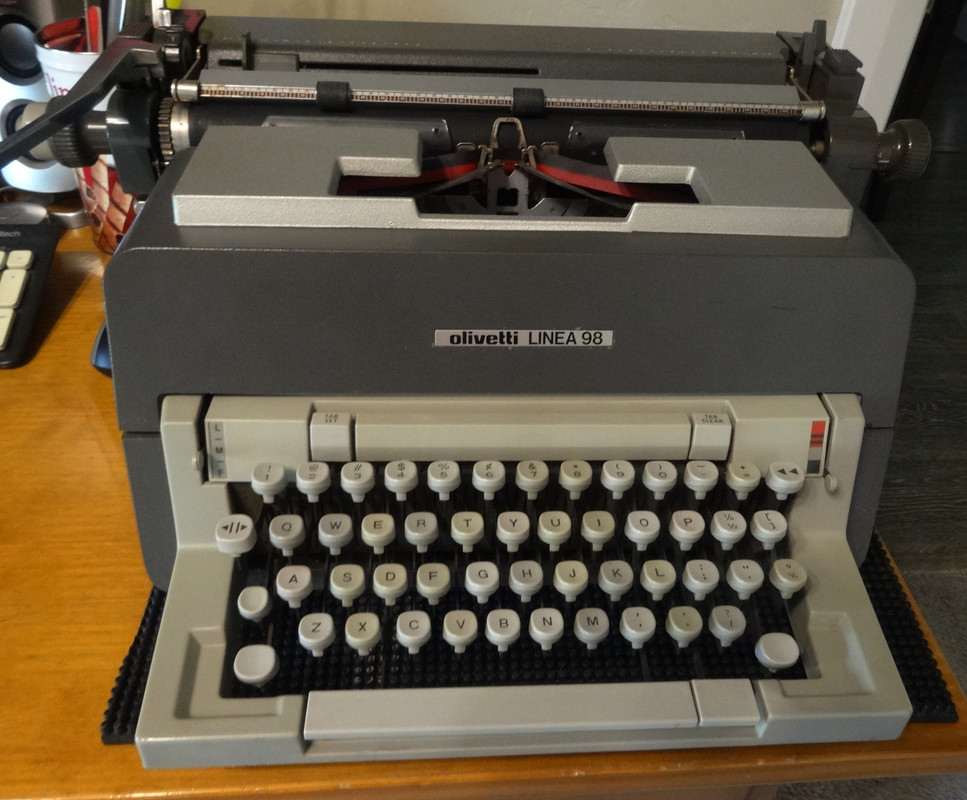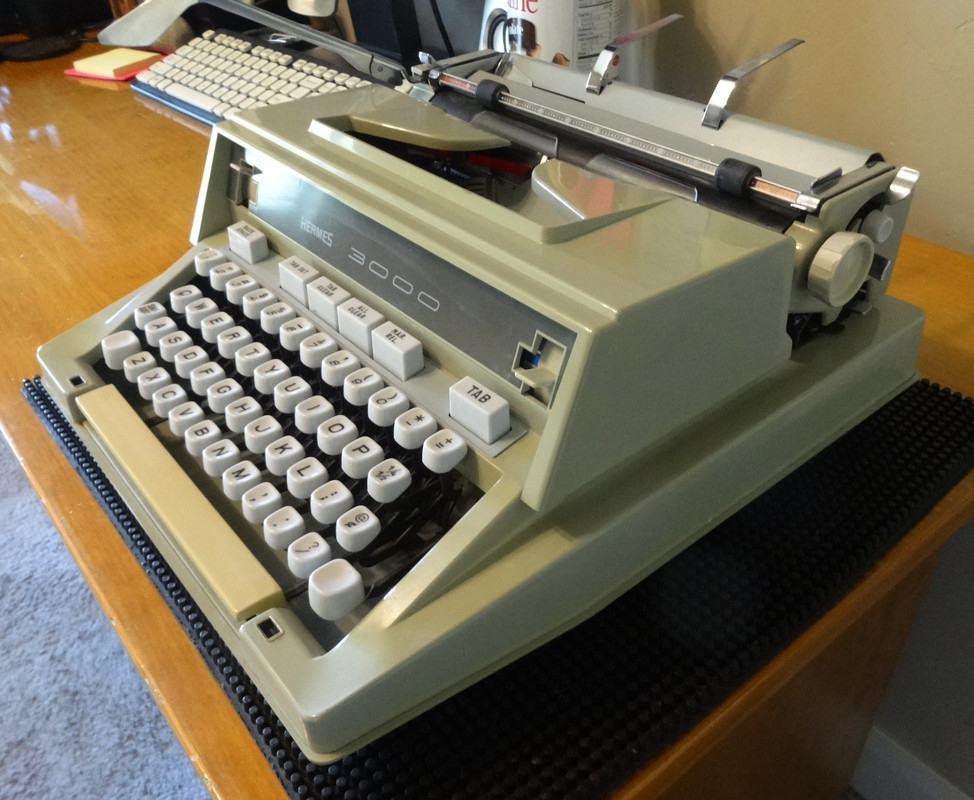- thetypewriterman
- Key Master
 Offline
Offline - From: Leiston, England
- Registered: 29-5-2013
- Posts: 942
Re: Olivetti Linea 98....In-Coming
Most of the carriage parts are inherited from the Olivetti Editor electric typewriter. The previous model Linea 88 had a way-rod carriage that had an unfortunate habit of spitting out its bearings, hence the change using something that was largely 'off the shelf'.
- Pete E.
- Typewriter Talk Elite
 Offline
Offline 
- From: Idaho - USA
- Registered: 23-6-2020
- Posts: 2,539
Re: Olivetti Linea 98....In-Coming
I found an identical match to the exiting colour of the eraser table...in satin-finish by Krylon called "Silver Nickel".
I repainted the raised section of the ribbon cover to help balance out some of the dark-grey on the machine.
.

- •
- Shamwari
- Novice Typer
 Offline
Offline 
- From: Scotland
- Registered: 06-5-2024
- Posts: 46
Re: Olivetti Linea 98....In-Coming
It's interesting how Olivetti's style changed from the rounded form of the Lexikon 80 and 80E in the 1950s to a very angular, linear style in the 1960s / 1970s with the Diaspron 82, Linea 98 and Praxis 48, not evolution but revolution!
- Pete E.
- Typewriter Talk Elite
 Offline
Offline 
- From: Idaho - USA
- Registered: 23-6-2020
- Posts: 2,539
Re: Olivetti Linea 98....In-Coming
Hermes did also...
.

- •
- M. Höhne
- Key Master
 Offline
Offline - From: Maine
- Registered: 14-3-2013
- Posts: 646
Re: Olivetti Linea 98....In-Coming
Shamwari wrote:
It's interesting how Olivetti's style changed from the rounded form of the Lexikon 80 and 80E in the 1950s to a very angular, linear style in the 1960s / 1970s with the Diaspron 82, Linea 98 and Praxis 48, not evolution but revolution!
Sure, but not so very unusual at all---happens all the time. And not nearly so dramatic as such (r)evolutions in many other fields; take your 1949 Chevrolet to your 1959 Chevrolet to your 1969 Chevrolet, to mention the first one that comes to mind in three seconds. Then look at domicile architecture and then large-building architecture throughout the 20th century. The 1997 Apple computers to the 1998 Apple computers.
Yes, it is interesting how typewriter styling has changed over time, how it tracks with other contemporary industrial styling and the extent to which it lead or followed general styling.
It would be worth a book to relate typewriter styling to
A. developments in typewriter mechanical technology (advent of the electrics---not so much)
B. concurrent changes in general style (the swoopy automotive Remingtons of the '50s. Henry Dreyfuss was hired by a typewriter company after he had designed railroad locomotives.)
C. developments in the general economy (cheaper or more extravagant styling)
D, developments in materials technology (stamped steel, cast aluminum, molded plastic)
E. response to competition (did anyone ever copy Olivetti?)
F. whatever I haven't thought of yet (exercise for the reader)
Yes, it is fascinating subject and Thanks for bringing it up. it'll prompt me to pay more attention than my current breakdown into styling decades that changed on the xxx0 years.


